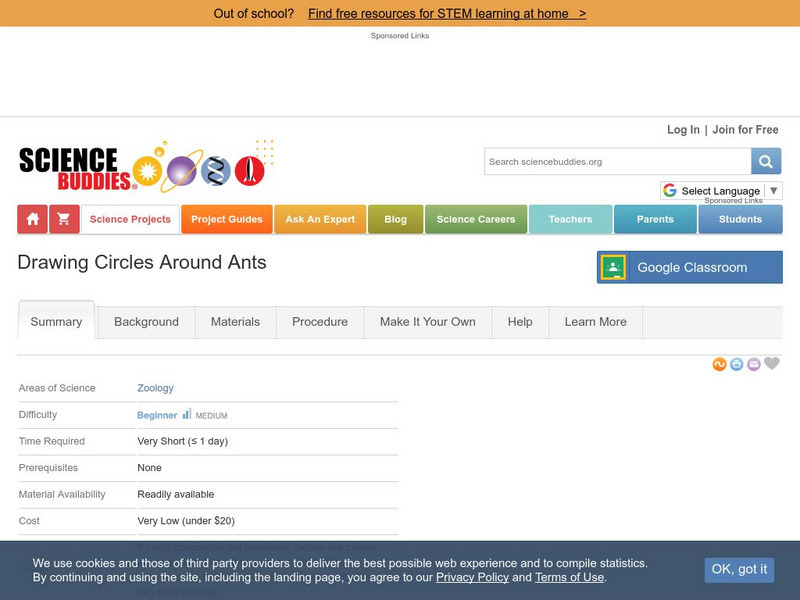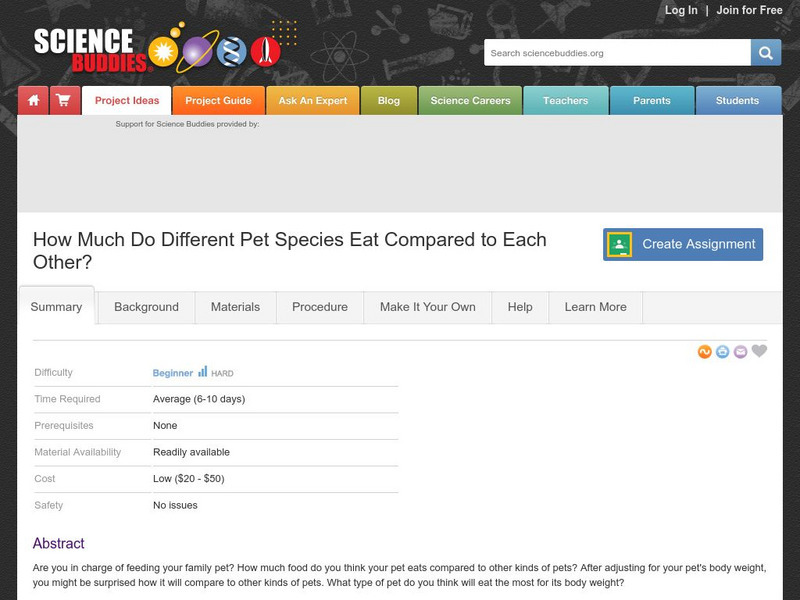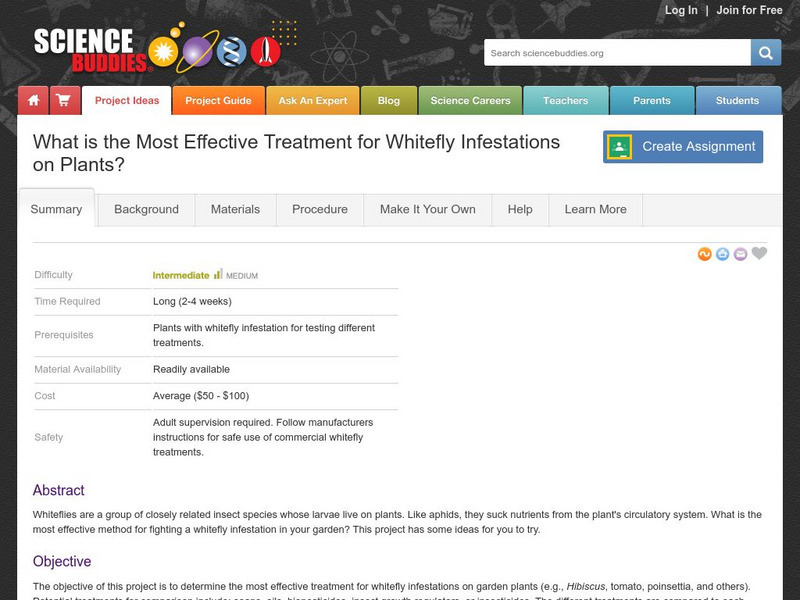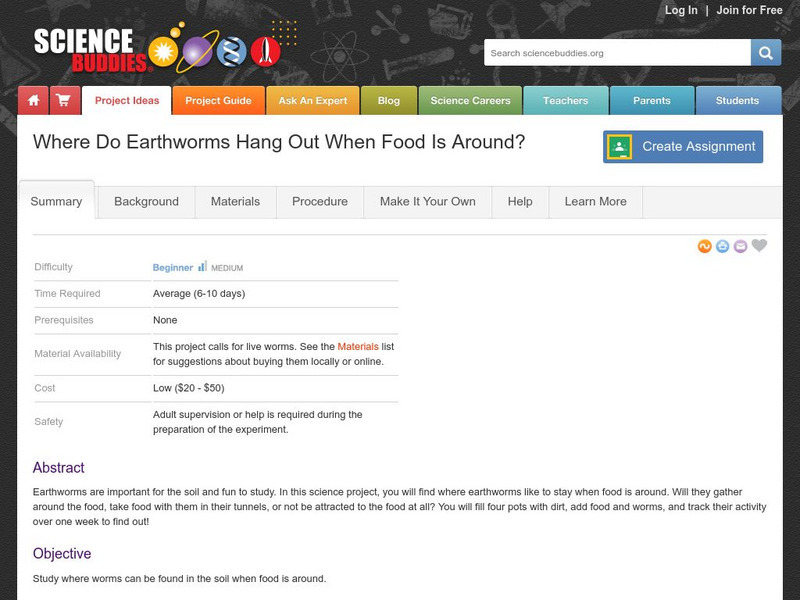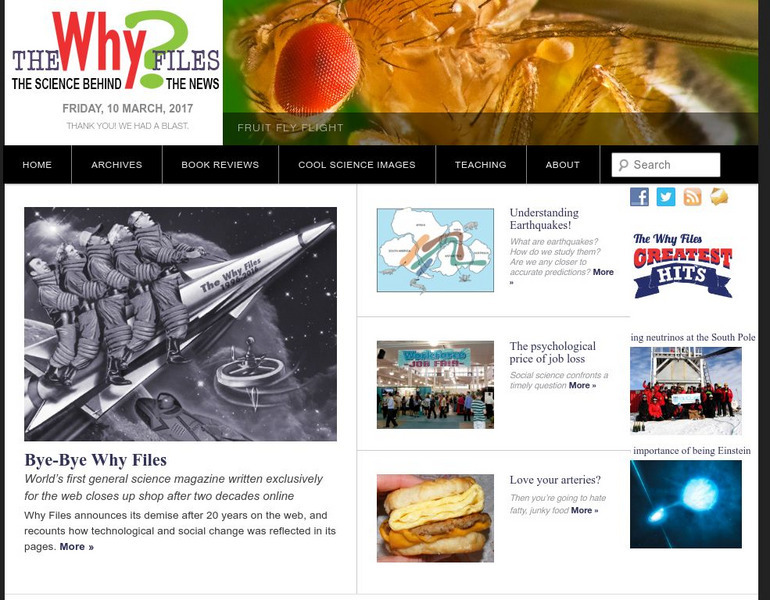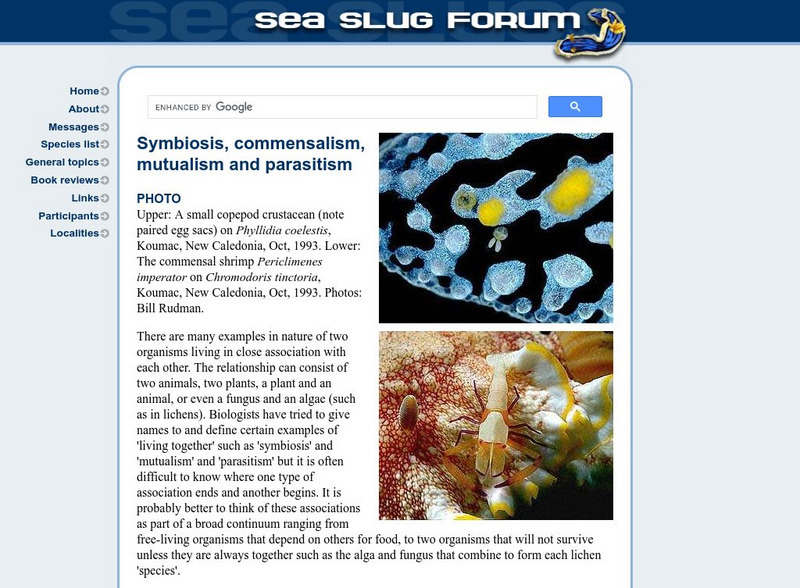Science Buddies
Science Buddies: Animal Magnetism: Do Magnets Affect Regeneration in Planaria?
The human body has an impressive ability to heal itself after injury, but humans have nothing on planaria. Planaria have an amazing ability to regenerate. An entire animal can regenerate from just a fraction of the body. This project...
Science Buddies
Science Buddies: Can Copper Foil Snails?
If you have a garden, you probably know about snails (or their shell-less relatives, slugs). You may even be looking for a good way to keep them from getting into your garden and eating up the results of all your hard work. Here's a...
Science Buddies
Science Buddies: Does Temperature Affect the Rate of Butterfly Development?
This is an interesting experiment for an Investigator who is 1) curious about insect metamorphosis and 2) patient. You'll need to set up different controlled environments for the chrysalides, and then check on them regularly as you wait...
Science Buddies
Science Buddies: Eeeeew! Maggot Mass Temperature
If you're looking for an experiment that will gross out just about everyone, you probably can't do much better than this. This project investigates an important question in the field of forensic entomology. Just make sure to get...
Science Buddies
Science Buddies: Where Do Lizards Go for Lunch?
You've probably heard about differences between the left brain and the right brain in people. One hypothesis has it that brain lateralization evolved as a survival mechanism in animals with eyes on the sides of their heads. One eye could...
Science Buddies
Science Buddies: Drawing Circles Around Ants
Do ants sometimes ruin your picnic? There are some chemical ant repellents you can spray to keep them away, but who wants to spray poison all over their food? In this experiment you can investigate some less toxic solutions that may be...
Science Buddies
Science Buddies: Testing Ant Repellents
Has your house ever suffered an ant invasion? This project is an interesting way to investigate what substances are effective as ant repellents. The goal is to find substances that keep ants away, yet are safe for humans and the...
Science Buddies
Science Buddies: Do Milkweed Bugs Show a Color Preference for Egg Laying Sites?
Milkweed bugs, as their name suggests, have a close relationship with the milkweed plant. The plant produces a milky sap, and toxic compounds, but somehow the milkweed bug is unaffected by them. Instead, it concentrates chemicals from...
Science Buddies
Science Buddies: What Seeds Do Birds Prefer to Eat?
In this project you'll build a bird feeding platform with four separate feeding areas. You'll be able to observe birds at close range, find out what birds inhabit your area, and learn about their seed-eating preferences. So get out your...
Science Buddies
Science Buddies: How Much Do Different Pet Species Eat?
How much food do you think your pet eats compared to other kinds of pets? In this experiment you will compare the food intake of your family pets to find out which pet eats more for its body weight.
Science Buddies
Science Buddies: What Are You Blubbering About?
Baby Beluga may swim in the deep blue sea, but the song doesn't mention how cold it is out there. Find out in this short project how a bit of blubber can be a useful adaptation when the water is ice cold.
Science Buddies
Science Buddies: Most Effective Treatment for Whitefly Infestations on Plants?
Whiteflies are a group of closely related insect species whose larvae live on plants. Like aphids, they suck nutrients from the plant's circulatory system. You will be asked to find the most effective method for fighting a whitefly...
Science Buddies
Science Buddies: Caffeine and Heart Rate: A Pharmacological Study Using Daphnia
In this project, water fleas (Daphnia magna), a semi-transparent freshwater crustacean, are used to study the effects of caffeine on heart rate. You do not have to learn how to take a crustacean's pulse though, because you can actually...
Science Buddies
Science Buddies: Earthworms: Nature's Tiller?
Everybody knows that worms are good for the soil, but not everybody knows why. This lab shows you how to efficiently measure earthworms within units of soil to determine their affect on decomposition and reduction of surface residue.
Science Buddies
Science Buddies: How Sweet It Is: Hummingbird Food Preferences
Do you like to watch hummingbirds? Have you ever wondered why there is specialty hummingbird food? What is it about the food that makes it so appealing? In this zoology science fair project, you will observe these remarkable creatures...
Science Buddies
Science Buddies: Ask a Cricket, 'What Is the Temperature?'
A cricket as a thermometer? Yes, that's right. In this science fair project, you'll investigate how the chirps of these tiny creatures can do more than lull you to sleep-they can tell you the temperature.
Science Buddies
Science Buddies: Froggy Forecasting: How Frog Health Predicts Pond Health
Have you ever heard the expression "a canary in a coal mine"? In the 1900s and earlier, coal miners brought canaries with them into the mines to act as early warning signals. The canaries were very sensitive to low levels of dangerous...
PBS
Pbs: The Shape of Life
Companion site for the 8-part PBS series, "The Shape of Life." Each section focuses on a different phylum, from porifera through chordata. This site is highly informative, with beautiful photography.
Smithsonian Institution
National Museum of Natural History: Department of Invertebrate Zoology
Search the Invertebrate Zoology Collection, and read about original research performed on all 30 major invertebrate animal phyla except insects.
Smithsonian Institution
National Museum of Natural History: Zoo Labs
Five inquiry-based investigations designed for the observation of primates in a zoo setting. The labs ask guiding questions and list notable primate behaviors.
Other
Royal Belgian Institute of Natural Sciences
This site can be viewed in 3 different languages. When a language is chosen information about the institute comes up and icons are presented for more information.
University of Wisconsin
The Why Files: Science Behind the News
The Why? Files from the University of Wisconsin explains the science behind the news. The website, tackling issues in news headlines, provides a good mix of information and interactivity that takes the "chore" out of learning.
Other
University of Wisconsin La Crosse: Zoo Lab: A Resource for Animal Biology
A fantastic source of basic zoological information, a great supplement for all animal biology classrooms.
Other
The Sea Slug Forum: Symbiosis and Commensalism
Question and answer site that contains a discussion of commensalism as it pertains to sea slugs. Nice photographs of aquatic commensalistic relationships.







